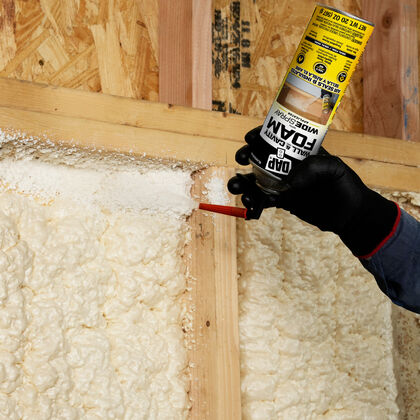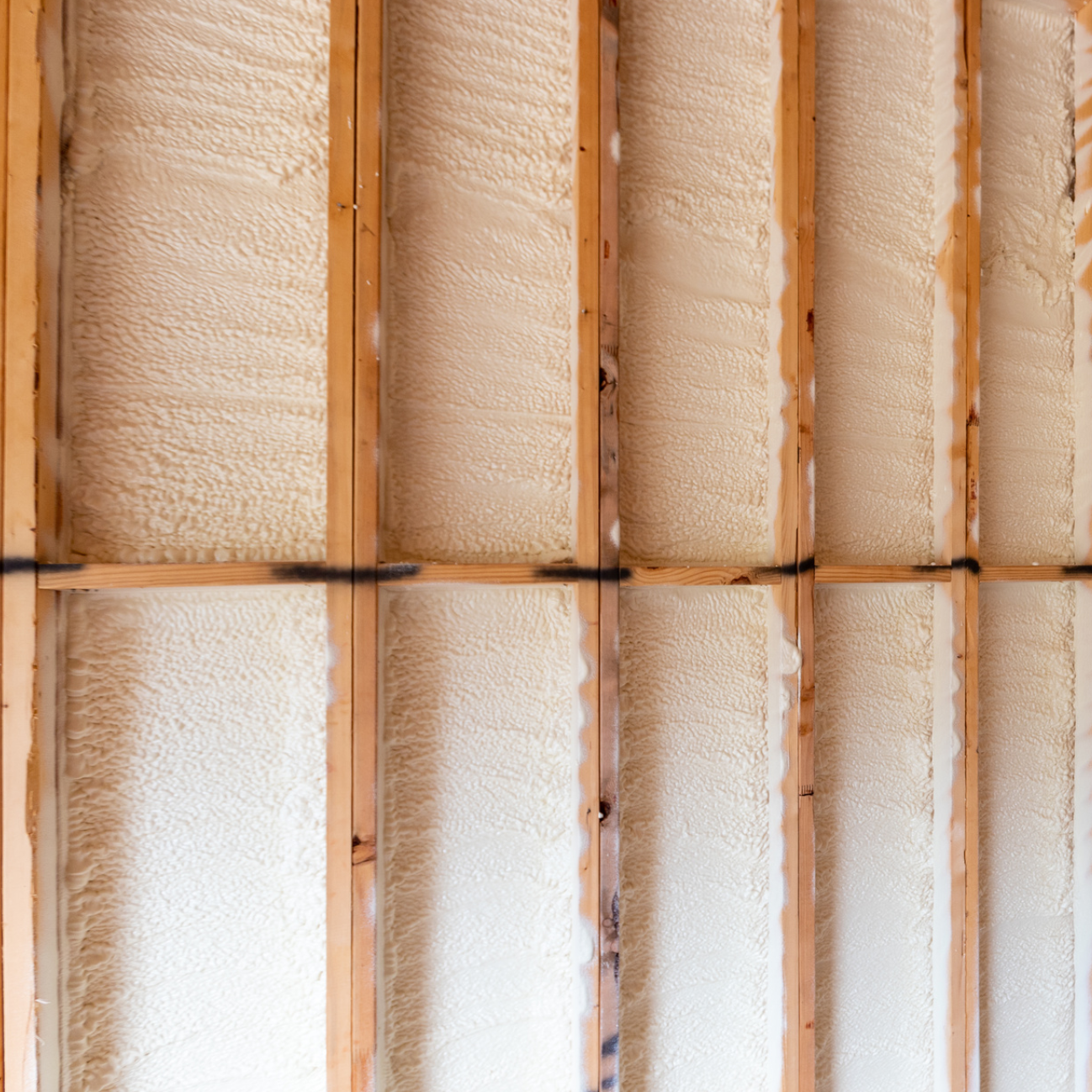Comparing Spray Foam to Typical Insulation: Which Is Better?
Comparing Spray Foam to Typical Insulation: Which Is Better?
Blog Article
Spray Foam: The Ultimate Service for Air Sealing and Insulation
Spray foam insulation has arised as a leading remedy for reliable air securing and thermal insulation, using a special mix of residential properties that establish it apart from conventional techniques. Understanding the full extent of its advantages, installment procedures, and comparisons with various other insulation kinds is vital for making notified decisions.
What Is Spray Foam?
Spray foam is a versatile insulation product that incorporates the concepts of air sealing and thermal resistance to enhance power effectiveness in buildings. Composed mostly of polyurethane or other comparable substances, spray foam is used as a fluid that increases upon call with surfaces, developing a strong, continuous layer of insulation. This one-of-a-kind property permits it to fill up voids, fractures, and voids that typical insulation materials may overlook, giving an exceptional air seal.
There are two primary types of spray foam: open-cell and closed-cell. Open-cell spray foam is lighter and extra flexible, supplying outstanding audio absorption and a lower R-value per inch - Spray Foam. On the other hand, closed-cell spray foam is denser, supplying a higher R-value, wetness resistance, and included structural honesty to developing parts
The application process typically includes specialized devices, making certain a seamless application that abides by various substratums, consisting of concrete, metal, and timber. This flexibility makes spray foam suitable for both brand-new building and constructions and retrofitting existing structures. Its capability to develop an airtight barrier dramatically adds to decreasing power intake and improving interior air top quality, thereby making it a favored selection among house owners and builders alike.
Benefits of Spray Foam Insulation
Among one of the most significant advantages of spray foam insulation is its phenomenal ability to create a constant air obstacle, which successfully decreases energy loss. Unlike traditional insulation materials, spray foam broadens to load fractures and spaces, making sure that air leak is substantially reduced. This characteristic not only enhances energy efficiency but also brings about decrease energy expenses gradually.
In addition, spray foam insulation supplies remarkable thermal resistance, adding to a much more steady interior setting. Its high R-value per inch permits reliable insulation in confined rooms, making it suitable for attic rooms, wall surfaces, and crawl areas. The moisture-resistant residential properties of spray foam aid avoid mold and mold growth, advertising much healthier living conditions.
An additional important benefit of spray foam insulation is its sound-dampening qualities (Spray Foam). It properly decreases sound transmission between areas, producing a quieter and more comfy home environment. The longevity of spray foam likewise stands out, as it does not droop or settle with time, maintaining its efficiency throughout its lifespan
Exactly How Spray Foam Works
Comprehending how spray foam insulation works is essential for appreciating its performance in air sealing and thermal resistance. Spray foam insulation is composed of two main parts: isocyanate and polyol resin. When these parts are mixed, they go through a chain reaction that causes the product to increase rapidly, producing a thick foam that fills spaces, splits, and cavities.
As the foam increases, it abides by surfaces, developing a closed seal that significantly minimizes air seepage. This characteristic makes spray foam insulation highly efficient at protecting against drafts and moisture penetration, which can cause power loss and damages over time. Additionally, the closed-cell variant of spray foam provides remarkable thermal resistance as a result of its inflexible framework, effectively reducing warm transfer.
The special properties of spray foam allow it to comply with irregular surfaces, guaranteeing extensive protection and a seamless barrier. Because of this, spray foam insulation not just improves power efficiency yet also adds to improved indoor air top quality by lowering the accumulation of pollutants and allergens. Inevitably, comprehending the auto mechanics behind spray foam emphasizes its duty as a remarkable choice for insulation and air sealing in both industrial and residential applications.
Installment Process Introduction

Prior to installment, the space has to be sufficiently cleaned up and prepped, guaranteeing that surface areas are devoid of dampness, particles, and dirt. This action is essential since impurities can compromise discover here adhesion and overall performance. Once the area is prepared, the application involves blending the 2 parts of the spray foam, which increases upon contact and fills gaps effectively.
Trained professionals need to conduct the installation, utilizing specialized equipment to ensure uniform insurance coverage and optimum density. Security safety measures, including wearing protective equipment and ensuring correct air flow, are essential throughout this procedure. After application, the foam normally remedies rapidly, forming a solid obstacle that improves energy effectiveness.
Contrasting Spray Foam to Conventional Insulation
When assessing insulation options, spray foam insulation stands out in contrast to standard materials such as fiberglass and cellulose. One of the key advantages of spray foam is its superior air securing abilities. Unlike fiberglass and cellulose, which can permit air infiltration, spray foam increases upon application, loading holes and spaces to create an impermeable seal. This leads to boosted power efficiency, as less warmed or cooled air runs away the home, causing lower energy bills.
In addition, spray foam offers a greater R-value per inch than traditional insulation kinds, providing even more effective thermal resistance in a thinner account. This characteristic is especially advantageous in rooms with limited dental caries depth. Moreover, spray foam is immune to wetness and mold and mildew growth, which can be a considerable interest in cellulose and fiberglass, especially in damp settings.
Nevertheless, spray foam insulation typically carries a greater ahead of time cost than its conventional equivalents. Home owners must consider this initial investment against lasting power financial savings and performance benefits. Eventually, while both insulation kinds serve their purpose, spray foam becomes an advanced remedy for modern-day insulation needs, particularly in terms of air sealing and thermal performance.

Conclusion
In recap, spray foam insulation stands for a very reliable option for accomplishing ideal air sealing and thermal resistance. Its distinct homes, including moisture resistance and sound dampening, make it ideal for numerous applications in both brand-new buildings and retrofitting tasks (Spray Foam). Although the first expenses may be higher contrasted to typical insulation products, the long-term benefits, such as substantial energy financial savings and enhanced indoor air quality, warrant the investment and underscore its worth in contemporary building techniques.
Spray foam insulation has arised as a leading service for reliable air sealing and thermal insulation, offering a special combination of properties that set it apart from traditional techniques.Spray foam is a flexible insulation material that combines the principles of air securing and thermal resistance to improve power efficiency in buildings.When reviewing insulation alternatives, spray foam insulation stands out in contrast to traditional products such as fiberglass and cellulose. Ultimately, while both insulation kinds offer their purpose, spray foam continue reading this arises as a why not try here more sophisticated remedy for modern insulation requirements, specifically in terms of air sealing and thermal effectiveness.
In recap, spray foam insulation represents an extremely effective option for attaining optimal air sealing and thermal resistance.
Report this page